Fees: It’s More Than a ‘Fee’ling
Jeffrey Breece
4/1/2022
A complete revenue management strategy considers and optimizes all sources of income. As the short-term rental industry has grown, so has the variety of different revenue sources—one of the largest being additional fees. Cleaning, administrative or processing fees can now play a central and sometimes controversial role in the profitability of a listing.
In our industry, fees walk the fine line between needing to cover operational costs and being a mini-pocket of revenue that helps increase margins. The dual purpose of fees means they can get quite confusing, especially when trying to match what the competition is doing, or managing guests’ perceptions.
In order to get a better, unbiased understanding of how fees are being used in the short-term rental market, we took a look at what the data is telling us. Before we dive in, however, let’s clarify a couple of points. To ensure we’re measuring fees proportionally across different types of listings, the main metric we’re going to use is percent of total guest cost (excluding taxes) that come from fees.
As we’re comparing 12 million reservations across different markets and property management systems, this was the most standard metric that could be applied. Therefore, for this study, we don’t break down fees by type.
Variation of Percentage Fees by Market
It’s no surprise that different property managers and the regions they reside in all have different approaches toward fees. When we examine the approximately 300 largest markets in the United States, the average percent of the total cost of reservations made up by fees is 19.6 percent. However, there is strong variance between markets, with some down in the single digits and others approaching 40 percent.
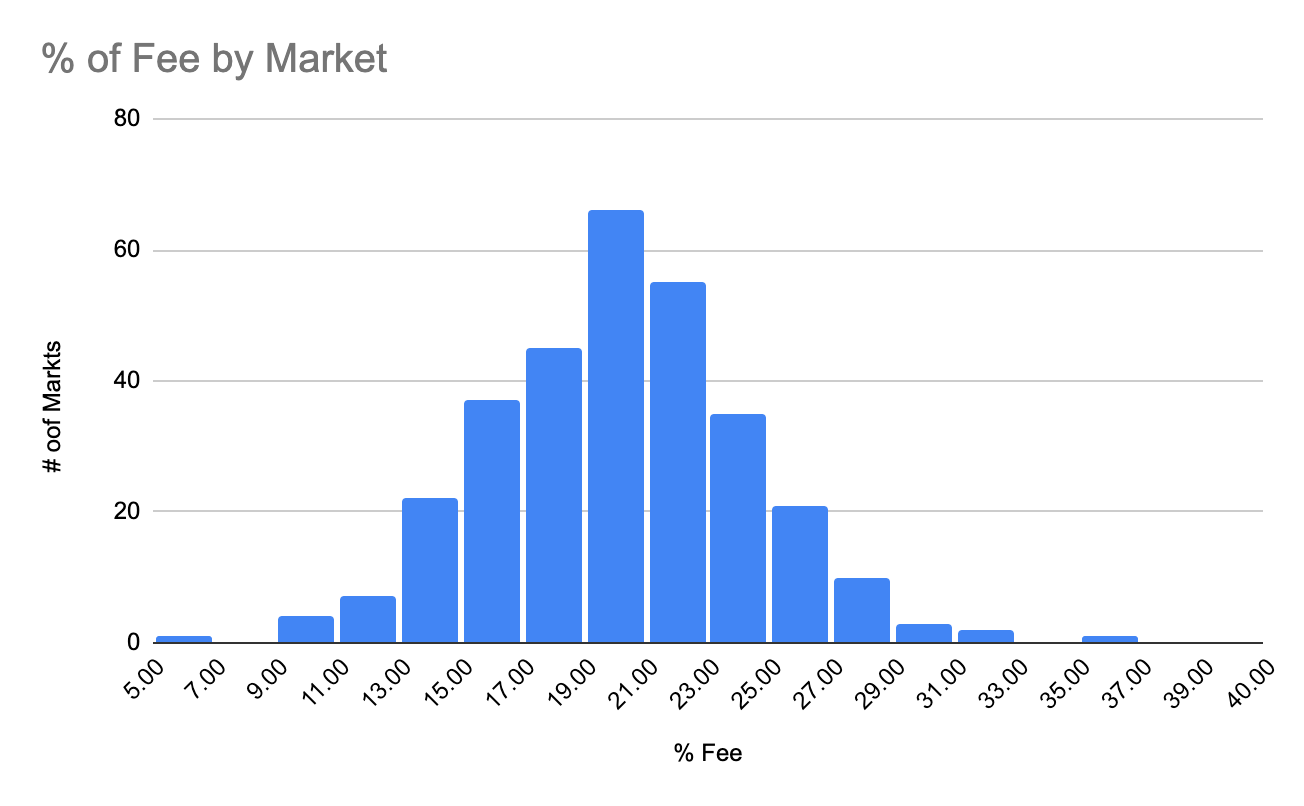
For the curious among us, below are the top 20 markets that have the highest percentage fees. As always, feel free to reach out to Beyond to learn more about your specific market.
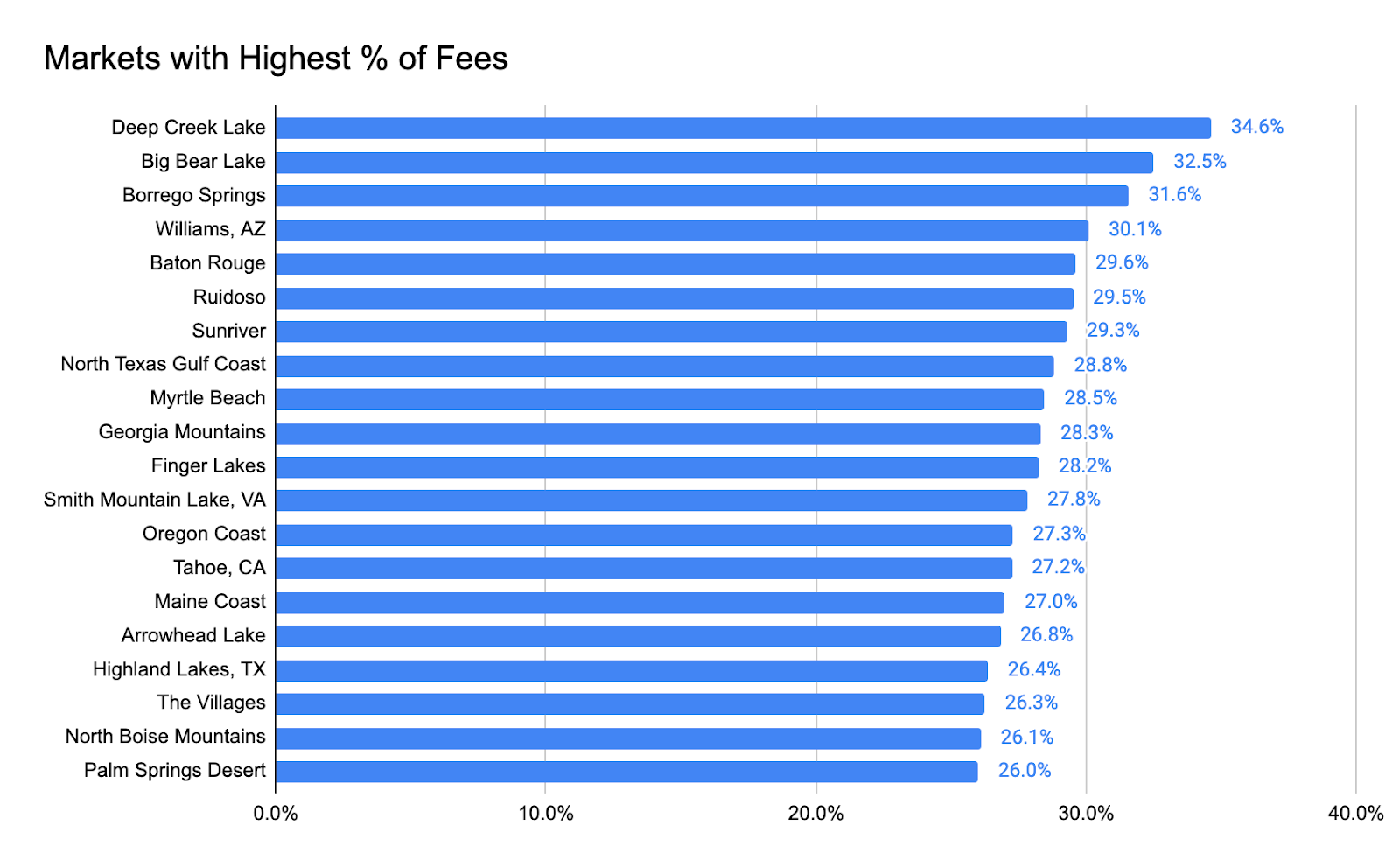
Source: Beyond Data
The Seasonality of Percentage Fees
A normal practice for our industry is to maintain a fixed fee dollar amount throughout the year, even when dynamic pricing adjusts rental rates due to variables like seasonality, events, and/or days of the week. In other words, charging a $50 cleaning fee regardless of what the base price happens to be.
This can be seen in the example of the Florida Panhandle below. The percentage that fees make up of the total cost fluctuates between 18 and 28 percent because the rental rates in June and July are higher than at other times of the year.
Pro Tip: If you’re trying to gain occupancy in the low season, reassess your fees as well as your normal rates.
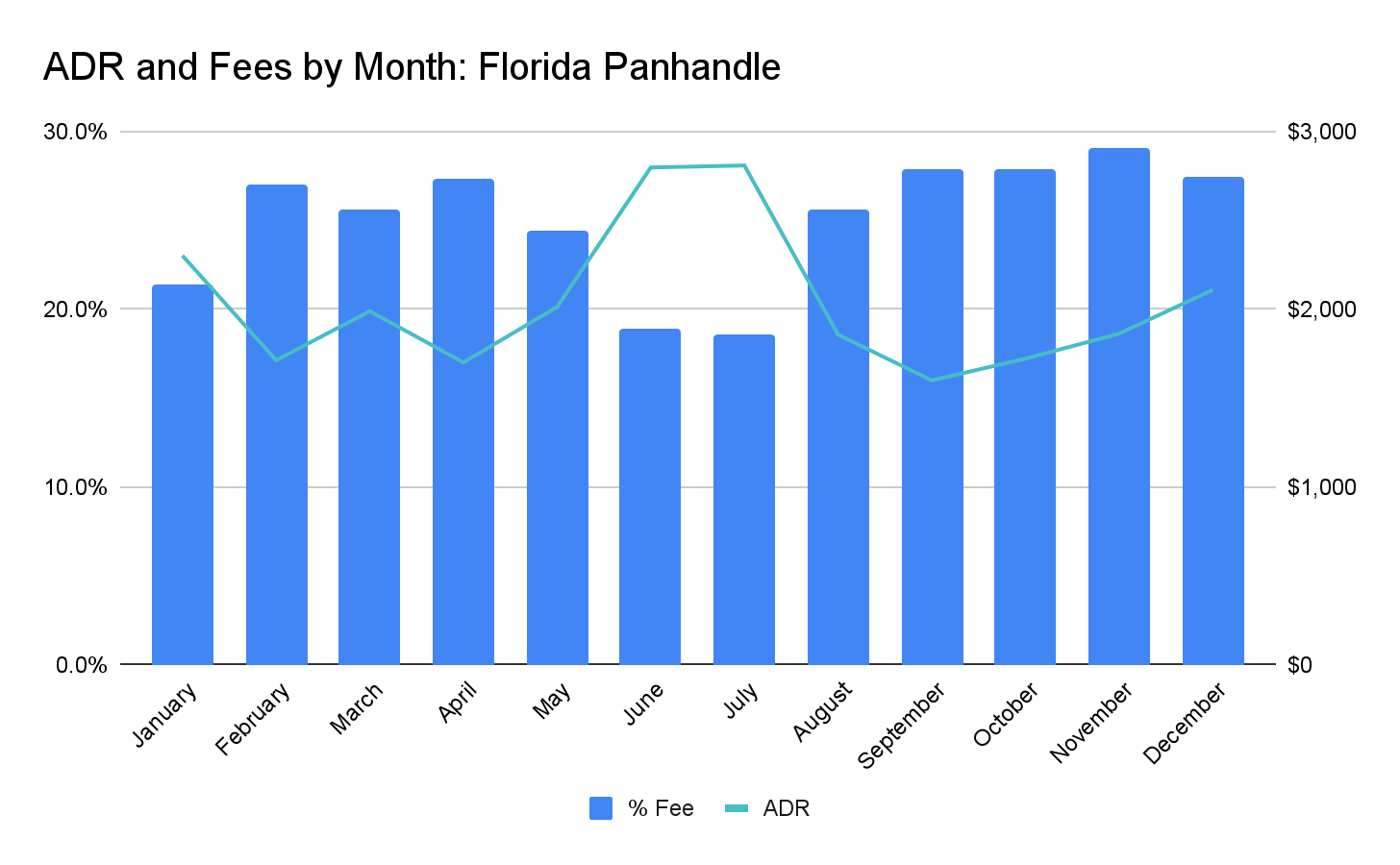
Source: Beyond Data
Percentage Fees by Length of Stay
While time of year is important, the most defining relationship of percentage fees are with length of stay (LoS). Given the nature of fixed fees—as opposed to variable—additional nights booked usually means the total percentage fees make up goes down.
This is one of the main reasons last-minute short stays can still be profitable to property managers, as they receive an abnormal amount of revenue from fees from shorter bookings.
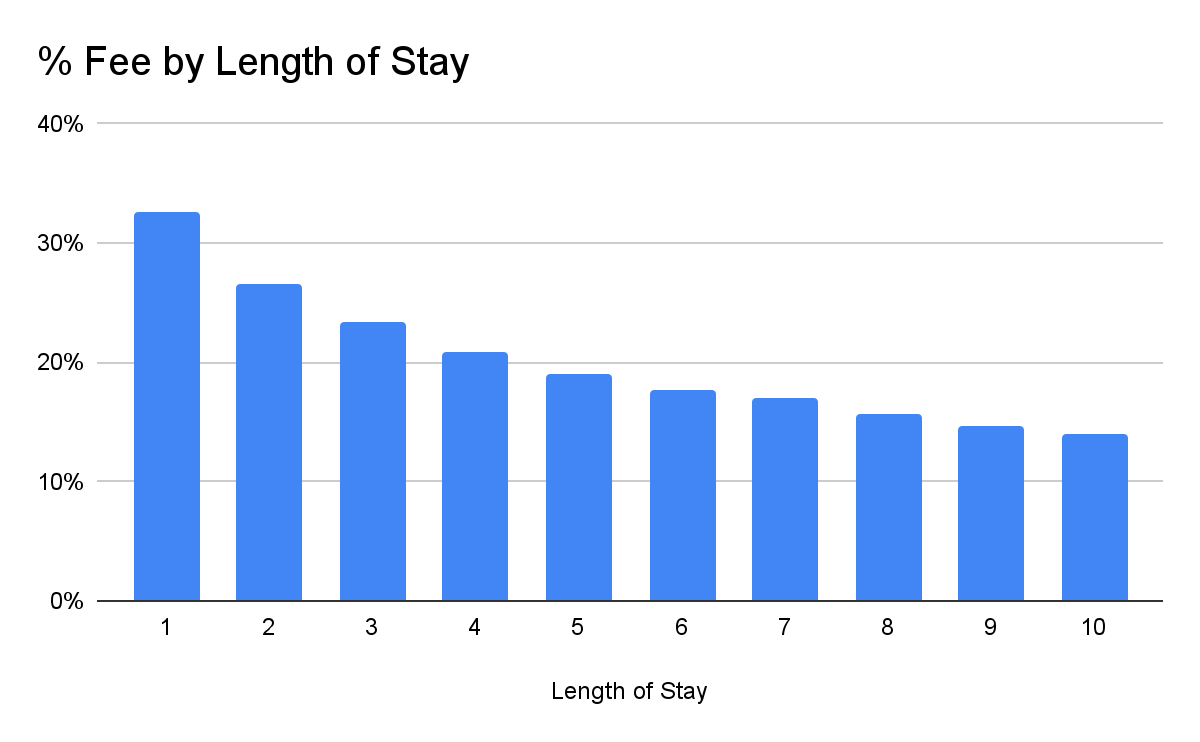
Source: Beyond Data
Percentage Fees by Bedroom
While length of stay is the most self-evident variable that affects fees, the fee compared to the size of the listing is probably the second most obvious correlation.
The average ADR and dollar amount of the associated fee typically grow together, but surprisingly it peaks at three bedrooms, with smaller and larger bedrooms seeing a lower percentage fee.
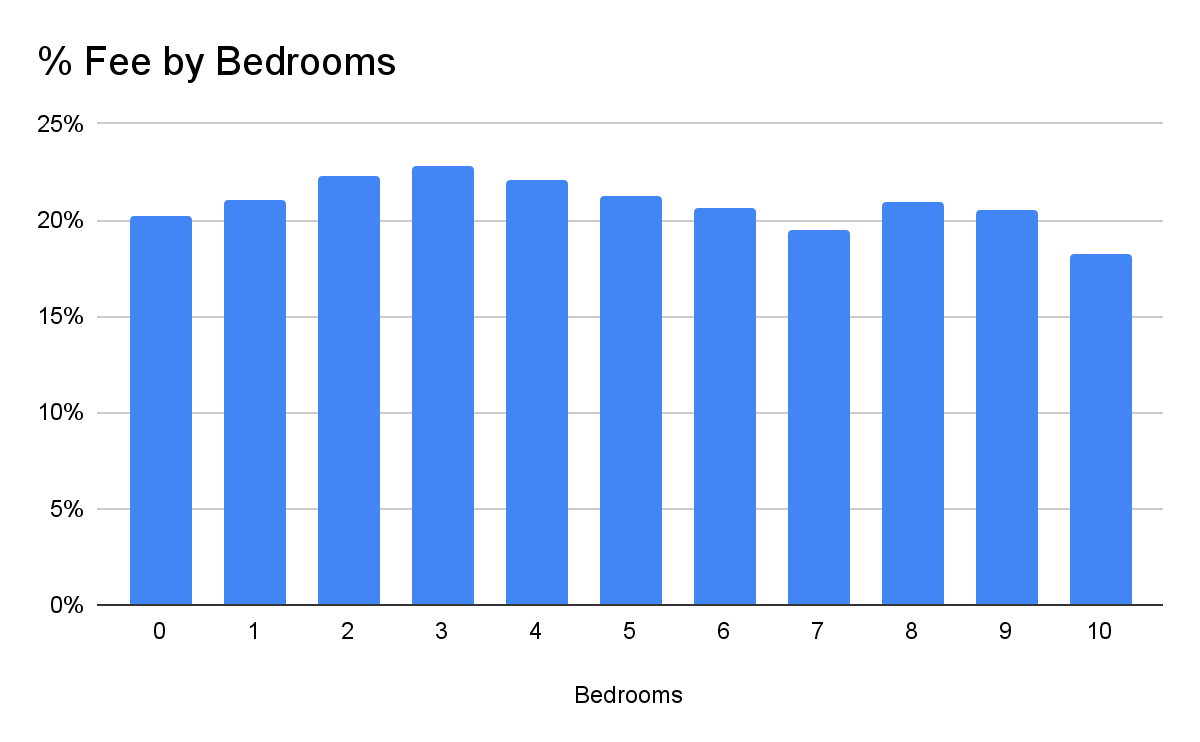
Source: Beyond Data
Professional Property Managers vs. Individual Hosts
Up until now, we’ve looked at data from all available reservations. The business models and desired comp sets between professional property managers (PMs) and individual hosts, however, can vary quite drastically.
Over the last six years, fees of professional PMs are on average 21 percent of fees of individual hosts. Before the pandemic, the percentage had been growing 3-4 percent per year, while the percentage fees of individual hosts remained relatively flat.
This is primarily due to PMs bringing fee management into their revenue management discussion and trying to use fees to not only cover expenses but to actually generate a profit.
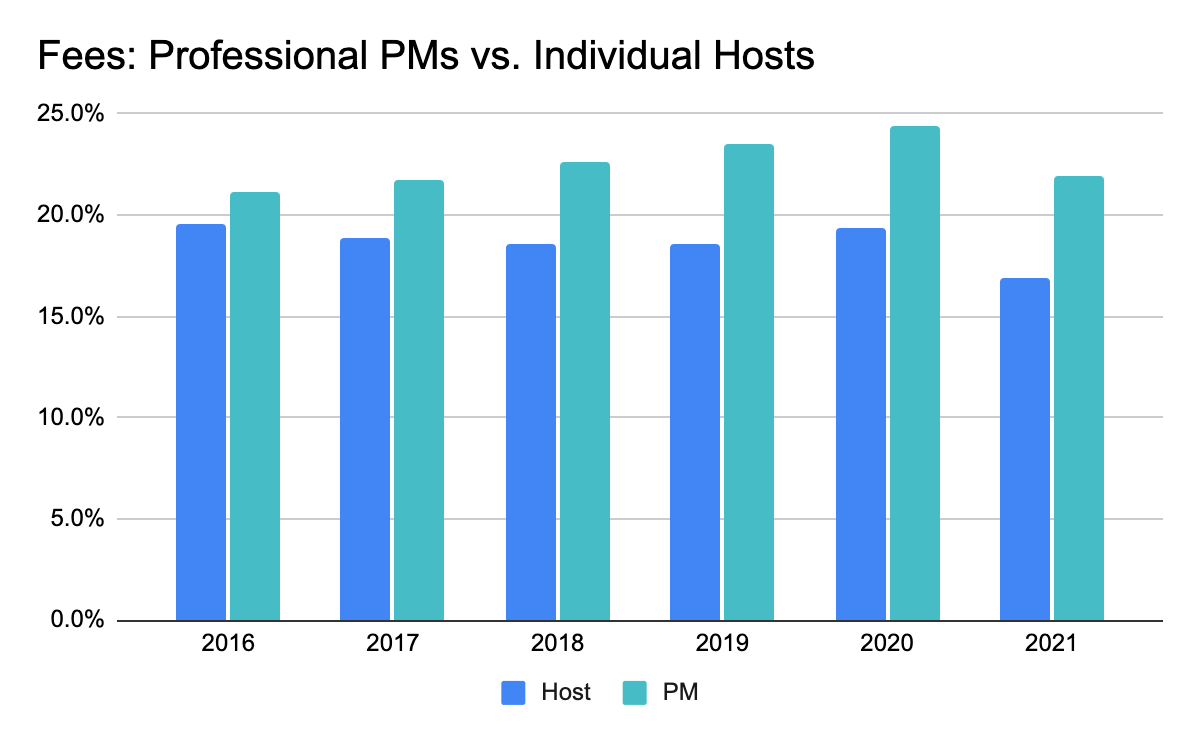
Source: Beyond Data
Regardless how you “feel” about using fees, they’re a crucial part of any revenue management strategy. Increasing them might be a good way to pad additional revenue but could come back to bite you if guests think they’re too high and not justifiable.
A good rule of thumb is to be aware of what others in your market are charging and staying within the waterline of your competitors. If they’re charging 25 percent, for example, you’re probably safe charging that as well.
Curious to know how your listings are faring in your market? Beyond can help with that and more. We power thousands of hosts to get, grow, and keep revenue through our easy-to-use revenue management platform. Connect your account today and try out Beyond with a 30-day free trial.
Jeffrey Breece
Jeffery Breece is the head of revenue management at Beyond.